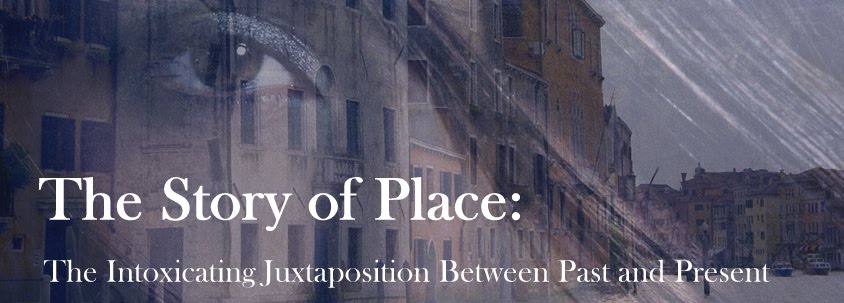Dear Readers:
I have finally finished transitioning my website to a new platform. I will be moving The Story of Place blog back to its home there at www.tonyamacalino.com. Thank you so much for your patience during this period. I will keep this blog live just in case the new platform proves just as hackable as the old, but I have faith!
See you on the new site!
--Tonya Macalino
Saturday, December 29, 2012
Wednesday, November 28, 2012
Saving Our Stories: Aldus Manutius and the Technology of Storytelling
Teaching, that noble profession, has a curious effect on a curious mind. The rigorous study required to instruct, the enthusiasm necessary to convey that knowledge past the resistance of the pupil, all this can create a passion for a subject strong enough to change the world.
For a certain educator from Renaissance
 |
| source: Bernardino Loschi |
In his Venetian workshop off the Campo San Agostin, this ambitious entrepreneur employed his “software developers” in the task of translating the flowing and unruly written language of the Greeks into a standardized type – an enormous architecture to create and then hand carve from a language once calculated to posses approximately 1,300 accent and letter combinations. Above the door of this workshop the frantic placard read:
“Whoever you are,
Aldus earnestly begs you to state your business in the fewest words possible
and begone, unless, like Hercules to weary Atlas, you would lend a helping
hand. There will always be enough work for you and all who pass this way.”
 |
| source: Robert Alan Thom |
And these early,
innovative technologies—like ours today—did not sell cheaply. But the market
was ripe and the early adopters helped Aldine Press survive first a glut in the
publications market and then the instability of the wartime market.
But then so did
Aldus’s entrepreneurial mind. Because this is when he was pushed to adapt his
products to meet the needs of the greater marketplace.
The “libelli
portatiles” were born.
 |
| source: Newberry Library |
Adapting the devotional print format of the octvo (eighth sheet), stripping away the traditional weight of academic commentaries, and adding Aldine Press’s latest innovation: the new compact calligraphy of the italic, Aldus created the modern pocketbook, making his beloved classics available to the mobile class of Renaissance humanists.
Aldus released books
from the study or the library and set them free to entertain and inspire the
wider audience of the educated upper class.
And eventually, the
rest of us.
So, from all of us who
treasure that book we cradle by a fire on a chill winter night, or even the
e-reader we thread through our fingers as we dangle from a handhold on the
train, thank you, Aldus Manutius…
 |
Aldine Press Publisher’s Mark
Festina Lente: “make haste slowly” (source: Dzembayz) |
So Spake Me…
In any group, any culture, it is the stories that bind us.
They hold our teachings, the collective intellectual and emotional knowledge
that allow us to relate to each other and to the world around us with the same
recognition of ideas, the same concepts of right and wrong.
It is no wonder that in our relentless drive to tinker and
to create that we embarked in our infant societies on the odyssey of developing
tools to capture and pass along these stories from person to person and from
generation to generation.
We began simply.
 |
| source: LRBurdak |
Smears of crude paint changed to artistically stained stone
that was to endure nearly 40,000 years.
Slowly, our representations of the world became
representations of ideas and those representations turned to a symbology of
sound. We tinkered, we created, we evolved our ingenious technology of story
from the previous generation’s and gave it over to the next to continue the
work.
Fingers soaked in plant juices against limestone…to chisels
against marble…to quill against parchment. Our wonders of innovation.
We were relentless.
 |
| source: Dmsdgold |
Rigid parchment changed to fine vellum, monks to publishers
hand-carving their typeset works of art in loving detail. Weighty tomes lifted
from their library podiums and settled into the palms of intellectuals.
Faster now, always faster.
 |
| source: UserFA2010 |
Wood punches turned metal, turned to fleeting electrons,
massive reels of pulped paper transformed to light against polarized glass.
We reach further and further even now.
 |
| source: jblyberg |
Pigmented pixels flashing their positive or negative colors
to illuminate a modern manuscript. Pages beyond counting fit easily into a
pocket, a purse.
So many stories.
We are so many voices now. More to know than can be drunk in
one lifetime. All available with the click of a button, 40,000 years of human
wisdom and folly. 40,000 years of clever minds developing new technologies to
carry our stories forward, to preserve them, to save the soul of our society
for children existing in an unimaginable distant future.
We storytellers, we tinkerers, we are not capable of stasis.
 |
| source: Photo Extremist |
We bring change in our wake. The thoughts, the technologies
of the times before ours were not more pure than our own, but rather left the
same wake in seas of their days as we complain of and revel in now.
So leave a trailing electric field across the glass as you
flip through Aldus Manutius’s beloved Aristotle, paint motion in the invisible
glow of an infrared laser as you wander amongst the long-ago revelers at a Shakespearean
play. Gaze with fascination at the broad and the narrow gap between the times
and minds that brought us here.
And imagine with wonder where our hands will reach to when
we stand on the shoulders of 40,000 years worth of genius.
Further Reading:
Friday, October 26, 2012
Discount Not the Dreamer
So Spake
Mo
There is much to be said for the way the life of the child molds the mind of the man he will become. Once there was a little Russian boy whose joy was flying down hills in his toboggan…until he caught a cold, not a cold, but the deadly scarlet fever. He fought, he survived, but at age 10 he was left near deaf and school became such a struggle that he was ultimately turned out at age 14.
From hence forward, books became his teachers.
At first, he put his ideas to paper in the form of science fiction, more thought-experiment than character study. Quickly, his passion for rigorous study overtook him and he published his first scientific paper near the age of 23. From there, the little boy from Kagula went on to create more than 400 works, dreams. Riding on the wings of another dreamer, Jules Verne, he was inspired compose 90 of those works on space travel, including rockets with steering thrusters, multistage boosters, space stations, airlocks for exiting and entering spaceships while in space, and closed-cycle bio-systems for food and oxygen in space colonies.
While the rest of the world played with the precursor to the automobile, he was colonizing the stars.
So Spake Me…
Konstantin Tsiolkovsky dreamed his dreams from 1857 to 1935. He is remembered as the Grandfather of Soviet Rocketry and the Father of Spaceflight, as the man whose work inspired those who finally did take us to the moon, including the father ofAmerica
Were all 400 of his ideas the stuff of legend? Not necessarily. But in a time when humans were experimenting with awkward steam-powered cars, he was developing the sleek Tsiolkovsky rocket equation which rocket scientists still use today.
Dreaming matters. The dreams of Jules Verne who sparked Tsiolkovsky’s imagination. The dreams of Arthur C. Clarke whose further dreams of that space elevator would spark the curiosity of Jerome Pearson of NASA, who in parallel with Yuri Artsutanov ofRussia
Then on to Bradley Edwards who secured NASA funding for the first serious feasibility study.
In 2006, Michael Laine assembles The LiftPort Group to develop the necessary technologies. The economy crash-lands the project for a period, but Laine’s group rises from the ashes with a successful 2012 Kickstarter campaign.
And they are not alone. Tech giant Google joins the race in 2011 and the Obayashi Corporation ofJapan
“The space elevator will be built about 50 years after everyone stops laughing.”
- Arthur C. Clarke, 1985
New Mexico
http://www.spaceref.com/news/viewnews.html?id=844
There is much to be said for the way the life of the child molds the mind of the man he will become. Once there was a little Russian boy whose joy was flying down hills in his toboggan…until he caught a cold, not a cold, but the deadly scarlet fever. He fought, he survived, but at age 10 he was left near deaf and school became such a struggle that he was ultimately turned out at age 14.
 |
| source: Wikimedia |
From hence forward, books became his teachers.
And they drove him. At 16, they pushed him so obviously that
his parents sent him to Moscow
He had the time—and the space—to dream.
 |
| source: WikiMedia |
At first, he put his ideas to paper in the form of science fiction, more thought-experiment than character study. Quickly, his passion for rigorous study overtook him and he published his first scientific paper near the age of 23. From there, the little boy from Kagula went on to create more than 400 works, dreams. Riding on the wings of another dreamer, Jules Verne, he was inspired compose 90 of those works on space travel, including rockets with steering thrusters, multistage boosters, space stations, airlocks for exiting and entering spaceships while in space, and closed-cycle bio-systems for food and oxygen in space colonies.
 |
| Tsiolkovsky's Spaceship source: WikiMedia |
While the rest of the world played with the precursor to the automobile, he was colonizing the stars.
With the inspiration of the Eiffel Tower
…The Space Elevator.
 |
| source: (c) LiftPort Group |
So Spake Me…
Konstantin Tsiolkovsky dreamed his dreams from 1857 to 1935. He is remembered as the Grandfather of Soviet Rocketry and the Father of Spaceflight, as the man whose work inspired those who finally did take us to the moon, including the father of
Like Descartes with the childhood illness that removed him
from society’s prescribed daily routine and allowed his mind to roam far and
wide (leading to analytic geometry and the foundations of modern philosophy),
Tsiolkovsky’s willingness to seize this early intellectual freedom led him to
explore ideas that had no obvious application at the time. Scientific dreams.
Dreams that became physical science, that took on reality much sooner than he
could possibly have imagined.
 |
| source: (c) AGeekMom |
Were all 400 of his ideas the stuff of legend? Not necessarily. But in a time when humans were experimenting with awkward steam-powered cars, he was developing the sleek Tsiolkovsky rocket equation which rocket scientists still use today.
 |
| Tsiolkovsky Monumet source: (c) Vladimir OKC |
Dreaming matters. The dreams of Jules Verne who sparked Tsiolkovsky’s imagination. The dreams of Arthur C. Clarke whose further dreams of that space elevator would spark the curiosity of Jerome Pearson of NASA, who in parallel with Yuri Artsutanov of
 |
| source: WikiMedia |
Then on to Bradley Edwards who secured NASA funding for the first serious feasibility study.
And from there the dream takes flight.
 |
| source: (c) Michael Laine |
In 2006, Michael Laine assembles The LiftPort Group to develop the necessary technologies. The economy crash-lands the project for a period, but Laine’s group rises from the ashes with a successful 2012 Kickstarter campaign.
 |
| source: (c) LiftPort Group |
And they are not alone. Tech giant Google joins the race in 2011 and the Obayashi Corporation of
In SPECTRE OF
INTENTION,
the date stamp on
Kaitlin’s contract is May 13, 2048.
So here’s to a little Russian boy with his toboggan and a
spark that has flown so far:
Discount not the
dreamers, for they deliver us into tomorrow.
 |
| source: (c) LiftPort Group |
“The space elevator will be built about 50 years after everyone stops laughing.”
“It’ll be built 10 years after everybody stops laughing…and
I think they have stopped laughing.”
- Arthur C. Clarke, 2003, 2nd Annual Space Elevator
Conference,
References and
Further Reading
The Space Elevator: “Thought Experiment,” or Key to the
Universe (Arthur C. Clarke)http://www.spaceref.com/news/viewnews.html?id=844
Wikipedia Space Elevator Entry
http://en.wikipedia.org/wiki/Space_elevator
Konstantin Tsiolkovsky
http://www.russianspaceweb.com/tsiolkovsky.html
LiftPort Group Kickstarter Campaign
http://www.kickstarter.com/projects/michaellaine/space-elevator-science-climb-to-the-sky-a-tethered
Konstantin’s Beanstalk—the Space Elevator
http://tappinginto.org/konstantins-space-elevatorFriday, September 28, 2012
On the Occasion of My Twentieth High School Reunion
So Spake Mo
Twenty years.
Twenty years since we
shared the journey of childhood together, since the stories of our lives were
so bound up in one another that we gave shape to each other, to the people we
would become. Amidst canyon and sagebrush, in the cradle of a one-stoplight
town, we began.
Twenty years.
Twenty years since we
set off to become that something more, to create the new people we held in the
dreams of our hearts. And in those twenty years, we created ourselves anew so
many times: cashier, engineer, homemaker, soldier, admin, entrepreneur, artist,
manager, teacher. Along this road, in the throes of the journey, we were aided
by the wisdom and the folly of hundreds as we retooled our dreams to match
reality…or reality to match our dreams.
Twenty years.
Twenty years into the
journey we return. We come in the guise of middle age, wearing the dust of so
long a road, so many selves created and discarded. We come wrapped in the
critique and the support of the hundreds we’ve met along the way. But for all
their love and advice, they could never truly know all of who we are. They were
not there when we began:
Amidst canyon and
sagebrush, in the cradle of a one-stoplight town.
Among those who helped
shape our original story.
Among friends.
Welcome home.
So Spake Me…
There it is. My own personal creation story, my myth. And it
is so very startling how archetypal the actors, events, the places of our
legends become in just twenty short years. My memories have become aged snapshots,
grainy and uncertain in their detail. Only the most vivid of the defining
moments remain and as I gaze back at them in my mind, I can’t help but wonder
how much of the truth remains after so many retellings.
I wrote Mo’s speech as the welcome piece for the reunion
book, looking forward to the reunion, looking at those snapshot memories anew.
With the fears of youth set to the side, curiosity rose up in its place.
Slowly, steadily my classmates transformed into one hundred and thirty-four
books I had never finished and “What happened next?” became the nagging
question tugging at my mind every time I stumbled across a Facebook post, an
old photo tucked in an worn children’s game, or a dusty yearbook I’d glanced
past for years without seeing.
And when the nights came?
The stories were more fascinating than I could have possibly
expected. Probably because they mattered to me. These people, I knew how hard
they had to work, how far they had to climb to get where they were now. And the
peaks they had conquered! Business owners, Air Force pilots, PhDs, researchers,
mothers, fathers, husbands, wives, flying high in the big city, settling cozy
in the small towns, even planting roots in our own hometown to keep her
thriving.
So many stories. Each story so new and yet so familiar. So many
glimpses at the archetype I had become in my classmates’ own legends—the girl I
had once been seen from new eyes. Each glimpse so surprising and so sweet.
And when the nights were over?
I left with a bit of sorrow at the stories left unheard, at
the renewed connections I knew would fade once more. I left missing my people.
But I also left happy. I am so proud of the people I come
from, how they have grown no matter what path they chose.
And that brings me the profoundest comfort.
Welcome home.
Friday, August 31, 2012
The Shame of a Saint
So Spake Mo
Legend says that in
the days before Bishop Honorius coaxed St.
John
Demon or supplicant,
the result was the same.
The saint fell.
As the young woman
grew greater and greater with child, the hermit could no longer face the evidence
of his sins. In his despair, he tried to erase his crime. He threw the mother
of his unborn son from a cliff.
Perhaps it was her
screams, perhaps it was the sight of her body cracking against the rocks, but St. John
For months he went on
like this, denying his humanity in penance for his sins until the day came that
God chose to release him from this trial. In his savage state, St. John St.
John
In turn, the young
woman was finally restored to her parents, the King and Queen, with much
celebration.
So Spake Me…
In Alyse’s first day as a fugitive, she takes refuge in the Church of St. John
the Golden-Mouthed, Venice
But what caught my eye in each of my sources for this tale
(and there are many versions), what I adjusted in my own retelling, was the
gloss applied to the double-homicide.
Violence in entertainment is always an argument-provoking
topic. Gloss over it too much and you will find yourself accused glorifying the
act, separating it from the consequences. Dig into it too graphically and you
will be grouped with the artists contributing to the desensitization of
society.
Violence whether emotional or physical is part of the human
story. It is the thing we fear in the night; the undercurrent of our own rage. As
much as I was repulsed by the light touch applied to the murder of a girl and
her unborn child, as much as I turn away gore and spatter of the latest summer blockbuster,
I would propose that the spectrum is necessary.
You cannot offer brutal honesty every time without numbing
the masses, but sometimes…sometimes we need to be reminded that what we are
accustomed to seeing has been sanitized, that the effects of a gunshot are
devastating and not just to the body splattered across the bathroom wall, but
also to the community to which that body was connected.
Sometimes we need to be reminded that the young woman dying
of a pierced lung and a cracked skull at the bottom of the cliff will not get
up again and birth a child to offer us forgiveness.
At least not without a miracle…
Tuesday, October 18, 2011
The Endless Cleverness of the Human Mind
So Spake Mo…
It is so closely our
neighbor and the heritage of many a dear friend or co-worker and yet for all the
grandeur of its landscape and culture, we fear it. The elegant architecture of
old Europe, the ancient temples of early civilization lay shrouded from our
view, withheld from inspiring our curious minds by a wall of violence and
corruption. 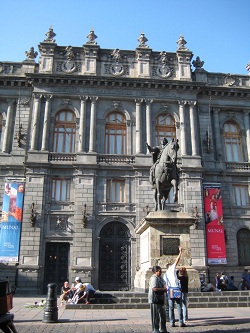
Mexico. So near and yet so
far.
A short while ago, my husband was
nevertheless charged with traveling to Mexico City. There is always a thread of
trepidation when a loved one goes so far away. This time it was no mere thread.
Yet, it also proved to be one of the most fascinating and deeply moving
explorations his business trips have afforded him so far.
Exploring a locale during a business trip is
always a fast and furtive thing, but a connection need only take a moment. A
brief stop at a cultural souvenir shop becomes a story, a glimpse into the magic
of days gone by when humanity first began weaving a world of culture and
technology around itself from…well in this case, an aloe plant more properly
known as agave.
Set aside the image you have of the aloe
plant that grew on you mother’s window sill with its tidy little pot and meet
the version the ancient peoples of Central and South America knew. As tall as
the man who is our guide and then again that wide, these plants produce a flower
stalk as tall as a telephone pole. They are impressive, rather dangerous looking
plants.
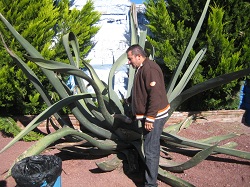
The man begins his story.
See here how much this one simple plant gave
those ancient peoples, how clever they were to find uses for every part.
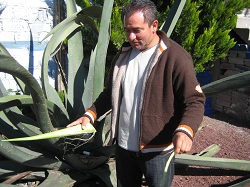
He slices off a leaf tip. With two neat
snicks of his knife he trims the two corners off the base of the triangle. A
couple scrapes of his thumbnail lift the filmy coating off each side of the
leaf. He grips the film and strips the film away. It comes off as a sheet. A
sheet of writing paper.
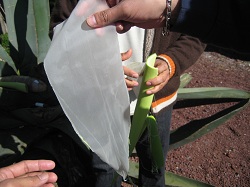
See here the paper the native people used for
their records. Feel the texture almost like plastic. Here it curls as it dries,
but opens once more when moistened.
Our guide pulls his knife carefully around
the thick leaf just below its blackened tip. With a twist and a yank he pulls
the needle free and with it comes the fibrous threads.
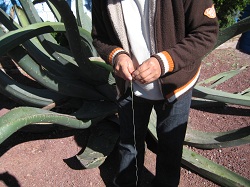
See here how each leaf provides the women with
a needle already strung with thread. This black needle hardens as it dries to
become a sharp awl. Or if the seamstress wishes to use a different tool, she can
trim the fibers and use them as individual threads.
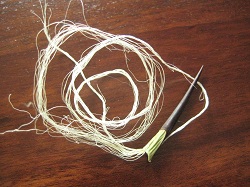
Now he draws us closer to peer into the
heart of the plant where the flower stalk has been removed. Again he pulls out
his knife and scrapes the sides of the hollow. The plant oozes forth its juices
into the cup of its heart.

See here how the plant provides nourishment,
this sweet agave nectar. And the nectar, we ferment for this milky-white
beverage, pulque, whose sour tang offers sustaining energy.
How clever were the minds of the early
peoples to discover these uses and so many more for just one plant. We marvel at
the impossibilities of the pyramids and the palaces, the great roads and the
aquaducts, but it is innovations of the everyman that make the story intimate,
make us wonder, had we encountered this harsh plant in the desert, if we would
have been so clever ourselves.
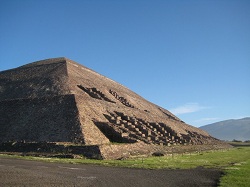
And so my husband walks into the shop to
learn yet more stories of gold-flecked obsidian and of looms and of the shaping
of silver into works of art, all tales he would never have heard of a creative
and hard-working people hidden behind a veil of violence.
So much taken away from the world by a
selfish few.
So Spake Me…
My husband met so many kind and generous people
during his brief stay in Mexico City. With personal tours on their own time,
associates showed him the wonders of their city with understandable pride. The
photos he brought back were beautiful.
One associate claimed that Mexico simply had a
bad marketing department. The violence occurred primarily to the north. Nothing
ever happened in their part of Mexico City. This has a ring of logic to it.
There are parts of L.A. I wouldn’t stroll with my children.
But if, within my small circle, I hear of one
person’s co-worker being kidnapped at gunpoint and another person’s co-worker
being carjacked by policemen, perhaps logic does not offer as much comfort as it
should.
My aunt and uncle participated in an RV caravan
through Mexico nearly a decade ago. They spoke of the beauty of the landscape
dotted with more ancient ruins than one might realize, of startling poverty, of
teenagers searching their RV with machine guns at the state borders. They said
it was an amazing trip. They also said they wouldn’t do it again these
days.
So will I experience that trepidation the next
time my husband is sent to visit that client? Probably. But I will also know
that the proper precautions can mitigate most of the danger. (After all did not
one of my small circle get mugged in downtown Portland for not taking the proper
precautions?) And I will wish for him another moving and fascinating whirlwind
tour due to the generosity of his new Mexican friends.
And thank you to them for keeping my husband
safe.
Friday, September 9, 2011
No Idea
So Spake Mo…
They had no idea what they were getting
into.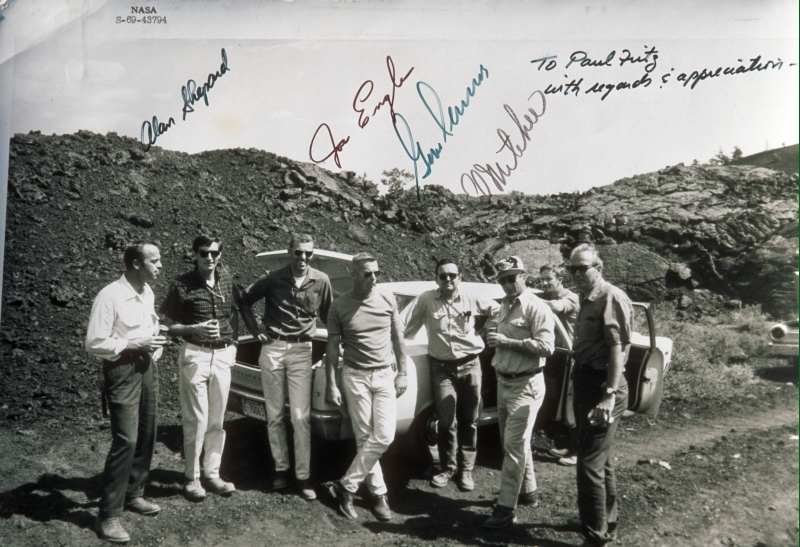
Would an astronaut’s eyes work up in space
or would the lack of gravity cause them to change shape, so that they could not
see?
Would gravity affect his ability to breathe,
even to swallow the food he needed to survive?
Could they keep a rocket together long
enough to find out? They were replacing a warhead with a human payload on a
freaking missile!
What would the surface of the moon be like?
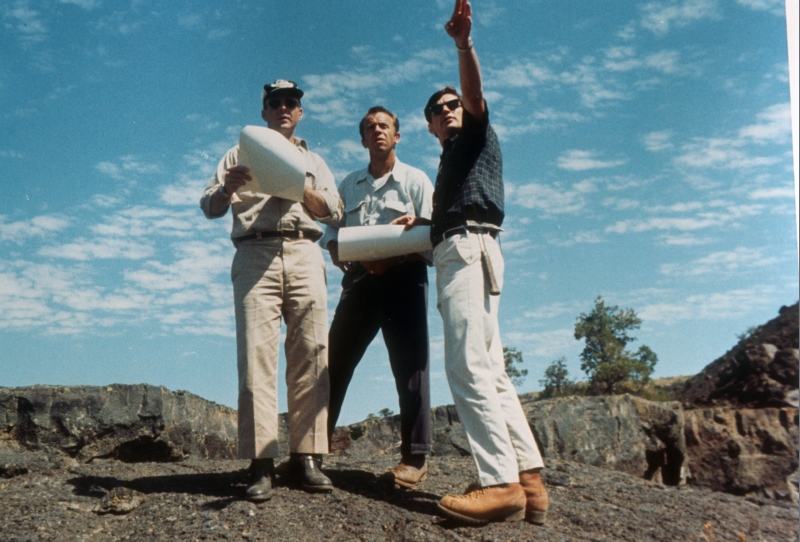
One of the places the astronauts trained was the Craters of the Moon National Monument in Idaho. They learned to be the eyes and hands of the geologists back home, identifying volcanic rock and formations. But would the surface they reached be anything like that volcanic landscape?
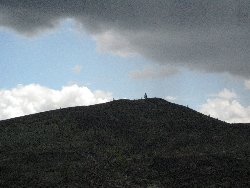
In vastness and desolation, perhaps.
In volcanic formation, no.
Were the eyes a concern? No.
Breathing, eating? Not really.
Did they figure those human missiles out?
Yes.
By the seats of their pants, by adapting the
technology they were familiar with, by a vigorous outpouring of ingenuity and
the determination not to be outdone.
They had no idea what they were getting
into.
And yet they managed what man has dreamed
since we first looked to the stars and thought to walk amongst those shining
gods.
They had no idea what they were getting
into, but they did it.
So Spake Me…
One of the reasons I’ve always found the story
of humankind’s ascension into space so inspiring is the sheer impossibility of
it. We should never have been able to make it happen. Where were the high speed
computers, the advanced aeronautics, the streamlined and elegant technologies we
so take for granted today?
But like so many other things in life, it is
that overwhelming monument that cannot be conquered which finally inspires
people to reach beyond themselves, to push each other past what they’ve always
believed to be the limits of their bodies and minds. The highest mountain, the
longest marathon, the greatest voyage.
So many of us stop with the I Don’t Knows. We
look at that list of questions not as a checklist of activities to be undertaken
on the path to Getting There, but as roadblocks, That Which Cannot Be Done.
Problems which prevent us from even beginning.
When we begin, we never know what we are really
getting into. Never. EVER. The simple trip from the family breakfast table to
the front door: missing shoes, missing homework, dawdling kids, an emergency
call from work.
Isn’t it a little strange that we expect any
other undertaking in life to be any different?
They had no idea what they were getting
into.
And neither will we, but it’ll be one hell of a
ride.
**Astronaut photos courtesy of National Parks Service.
**Astronaut photos courtesy of National Parks Service.
Subscribe to:
Posts (Atom)
